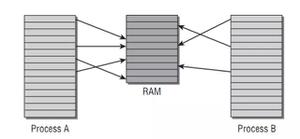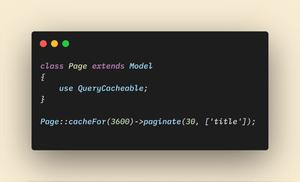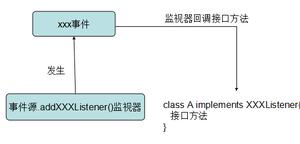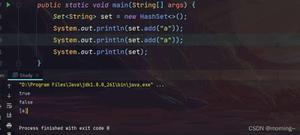Java Servlet调用数据库复习

首先要导入jar包。
剩下的基本就是模版式的代码了:
public class main { // JDBC 驱动名及数据库 URL
static final String JDBC_DRIVER = "com.mysql.jdbc.Driver";
static final String DB_URL = "jdbc:mysql://localhost:3306/test";//端口号,数据库名
// 数据库的用户名与密码,需要根据自己的设置
static final String USER = "root";
static final String PASS = "";
public static void main(String args[]){
Connection conn = null;
Statement stmt = null;
try{
// 注册 JDBC 驱动
Class.forName("com.mysql.jdbc.Driver");
// 打开链接
System.out.println("连接数据库...");
conn = (Connection) DriverManager.getConnection(DB_URL,USER,PASS);
// 执行查询
System.out.println(" 实例化Statement对...");
stmt = (Statement) conn.createStatement();
String sql;
sql = "INSERT INTO students VALUES(\"li\",\"1234\")";//向数据库中插入数据
stmt.executeUpdate(sql);
sql = "SELECT unmber, name FROM students";
ResultSet rs = stmt.executeQuery(sql);
// 展开结果集数据库
while(rs.next()){
// 通过字段检索
String name = rs.getString("name");
String id = rs.getString("unmber");
// 输出数据
System.out.print("ID: " + id);
System.out.print(", 名称: " + name);
System.out.print("\n");
}
// 完成后关闭
rs.close();
stmt.close();
conn.close();
}catch(SQLException se){
// 处理 JDBC 错误
se.printStackTrace();
}catch(Exception e){
// 处理 Class.forName 错误
e.printStackTrace();
}finally{
// 关闭资源
try{
if(stmt!=null) stmt.close();
}catch(SQLException se2){
}// 什么都不做
try{
if(conn!=null) conn.close();
}catch(SQLException se){
se.printStackTrace();
}
}
System.out.println("Goodbye!");
}
}
Servlet通过java调用数据库
基本上与java直接调用一模一样。
但是有一点很重要!!!!!!!!!!!
千万不要把jar包导入到web项目下,会报ClassNotFound异常。
把jar包删了,放到tomcat的lib下就行。
public class Hello extends HttpServlet { private static final long serialVersionUID = 1L;
// JDBC 驱动名及数据库 URL
static final String JDBC_DRIVER = "com.mysql.jdbc.Driver";
static final String DB_URL = "jdbc:mysql://localhost:3306/test";
// 数据库的用户名与密码,需要根据自己的设置
static final String USER = "root";
static final String PASS = "";
/**
* @see HttpServlet#HttpServlet()
*/
public Hello() {
super();
// TODO Auto-generated constructor stub
}
/**
* @see HttpServlet#doGet(HttpServletRequest request, HttpServletResponse response)
*/
protected void doGet(HttpServletRequest request, HttpServletResponse response) throws ServletException, IOException {
Connection conn = null;
Statement stmt = null;
// 设置响应内容类型
response.setContentType("text/html;charset=UTF-8");
PrintWriter out = response.getWriter();
String title = "Servlet Mysql";
String docType = "<!DOCTYPE html>\n";
out.println(docType +
"<html>\n" +
"<head><title>" + title + "</title></head>\n" +
"<body bgcolor=\"#f0f0f0\">\n" +
"<h1 align=\"center\">" + title + "</h1>\n");
try{
// 注册 JDBC 驱动器
Class.forName("com.mysql.jdbc.Driver");
// 打开一个连接
conn = (Connection) DriverManager.getConnection(DB_URL,USER,PASS);
// 执行 SQL 查询
stmt = (Statement) conn.createStatement();
String sql;
sql = "SELECT unmber, name FROM students";
ResultSet rs = stmt.executeQuery(sql);
// 展开结果集数据库
while(rs.next()){
// 通过字段检索
String name = rs.getString("name");
String id = rs.getString("unmber");
// 输出数据
out.println("ID: " + id);
out.println(",名称: " + name);
out.println("<br />");
}
out.println("</body></html>");
// 完成后关闭
rs.close();
stmt.close();
conn.close();
} catch(SQLException se) {
// 处理 JDBC 错误
se.printStackTrace();
} catch(Exception e) {
// 处理 Class.forName 错误
e.printStackTrace();
}finally{
// 最后是用于关闭资源的块
try{
if(stmt!=null)
stmt.close();
}catch(SQLException se2){
}
try{
if(conn!=null)
conn.close();
}catch(SQLException se){
se.printStackTrace();
}
}
}
/**
* @see HttpServlet#doPost(HttpServletRequest request, HttpServletResponse response)
*/
protected void doPost(HttpServletRequest request, HttpServletResponse response) throws ServletException, IOException {
// TODO Auto-generated method stub
}
}
以上是 Java Servlet调用数据库复习 的全部内容, 来源链接: utcz.com/z/390750.html









